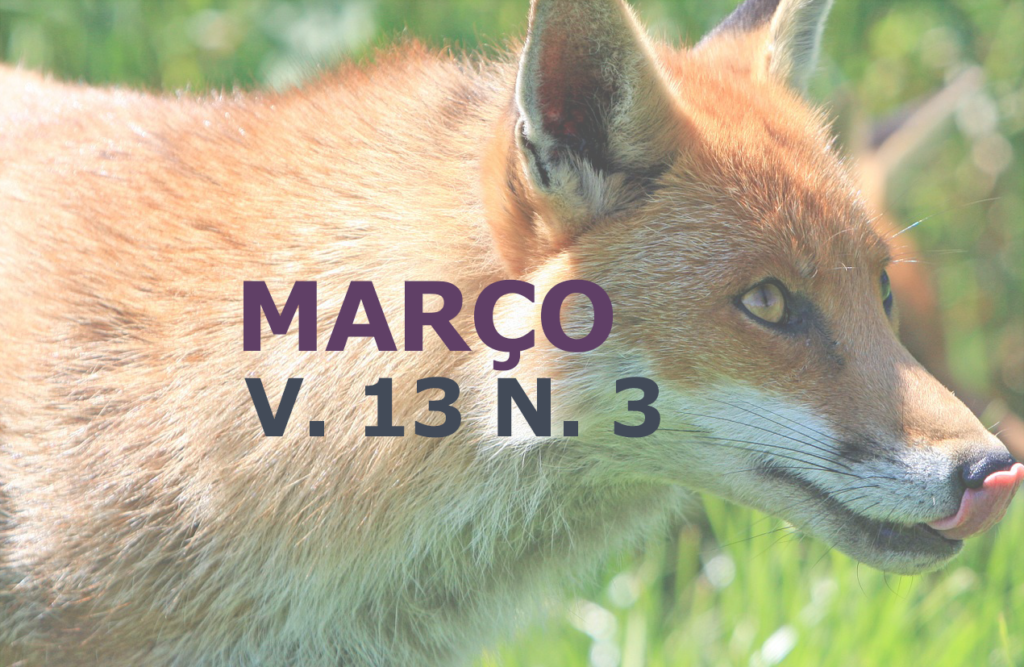Capybara’s (Hydrochoerus hydrochaeris) thermography of urban perimeter of Campo Grande-MS
DOI:
https://doi.org/10.31533/pubvet.v13n3a297.1-9Keywords:
wild animals, surface temperature, differential diagnosisAbstract
The objective of this study was to obtain thermographic images of capybaras that inhabit urban areas with the purpose of obtaining initial diagnoses without direct contact with them, not interfering with the comfort and well-being of the animals, besides not provoking changes in their daily behavior. The camera used thermographic model Flir SC620 where captured images of different animals both individual and in groups, being classified, when individual, as males and females, adults or puppies and animals in groups. The analyzed group was of a total of 25 animals located in the “Parque Das Nações Indígenas”, located in the urban center of the city of Campo Grande - MS in the month of November of 2017. The images were captured at 17 hours, with local temperature of 28 °C and relative humidity of 80%. Areas such as body and head were analyzed, where they were subdivided into articulations, specific regions with specific indications of increased local temperature, eyes and mouth and dashed lines from the body to the limbs, body in the lumbar region and head. Due to the way non-invasive thermography was used, the stress levels were very low and the time reduction was also very significant. It was found that the levels of stress were low and that the animals could thus maintain their habits normally. The males showed a significant increase in temperature in the region where the supranasal gland is located in relation to the rest of the body, whereas in the females the regions of greater heat were in the ocular region, being equal to the males in the regions of the atrial conduit. The pups presented higher temperatures when compared to the adult animals, probably because they present a higher metabolism due to their greater energy demand. This work shows the efficiency of the methodology to reduce the handling with these animals, not altering their well being and their homeostasis. With this, it can be verified that the images can help us to identify pathologies, number of animals in a batch, search of animals in places of difficult access and classification of male or female, assisting us in both individual clinical examinations and group analyzes of the same.
Downloads
Published
Issue
Section
License
Copyright (c) 2019 Lucas Gomes da Silva, Nickson Milton Corrêa Siqueira, Danaila Bruneli Fernandes Gama, João Victor de Souza Martins, Rafael de Oliveira Lima, Larissa Venier de Oliveira, Rodrigo Gonçalves Mateus, Paula Helena Santa Rita

This work is licensed under a Creative Commons Attribution 4.0 International License.
Você tem o direito de:
Compartilhar — copiar e redistribuir o material em qualquer suporte ou formato
Adaptar — remixar, transformar, e criar a partir do material para qualquer fim, mesmo que comercial.
O licenciante não pode revogar estes direitos desde que você respeite os termos da licença. De acordo com os termos seguintes:
Atribuição
— Você deve dar o crédito apropriado, prover um link para a licença e indicar se mudanças foram feitas. Você deve fazê-lo em qualquer circunstância razoável, mas de nenhuma maneira que sugira que o licenciante apoia você ou o seu uso. Sem restrições adicionais
— Você não pode aplicar termos jurídicos ou medidas de caráter tecnológico que restrinjam legalmente outros de fazerem algo que a licença permita.





